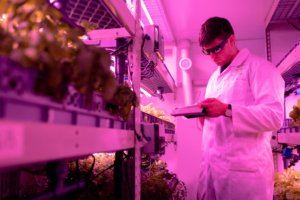
LinkedIn’s Workforce Confidence Index surveyed nearly 5,000 people from October 9 through October 22 to find out if they were considering switching jobs, and if so, why they’re seeking out new opportunities.
Here are some selected highlights of the survey:
- The results found that almost 60% of the respondents are “either actively looking to switch industries or are considering doing so.”
- Higher compensation tops the list, being cited by 54% of people considering a different industry.
- Alignment with personal values is nearly as common at 48%.
- More opportunities for advancement are also a top-three factor at 44%.
- Flexibly work options stands at 36%.
- Around 34% are interested in working from home.
- Surprisingly, only 14% said that they were looking for a job that would have less exposure to Covid-19.
- As it relates to the work style, the potential job switchers say that they desire on-site (60%), hybrid (55%) and remote (52%).
The study offers key insights:
Hiring slowing down from the spring surge
Nationally, across all industries, hiring in the U.S. was 1.6% lower in October 2021 compared to last month. National hiring was 23.4% higher in October 2021 compared to October 2020.
Agriculture, Education and Public Safety see biggest monthly gains:
- Agriculture (13% higher)
- Education (8% higher)
- Public Safety (7.4% higher)
The industries hiring at the strongest levels compared to pre-Covid-19:
- Recreation & Travel (41.1% higher)
- Software & IT (22.7% higher)
- Corporate Services (17.4% higher)
The growth in agriculture-related jobs surprised me, so I did a little homework. It seems that there has been an increase in the deployment of technology for farming, creating new types of jobs. There’s also a fast-growing trend of people preferring farm-to-table food, as it’s seen as fresher with less chemical additives. More farmers are selling their produce at “farmers markets” in communities around the country. Agriculture is seasonal and sees large spikes in hiring, depending upon the time of year.
There’s been exciting work in areas, such as precision agriculture, urban agriculture, sustainable agriculture and agricultural technology. In 2020, 19.7 million jobs were related to the agricultural and food sectors.
Education seemed surprising too. Given some thought, it makes sense. After a brutal 2020, when many public schools closed down, and teachers—concerned about their health—didn’t want to go into a classroom. A RAND survey, in early January 2021, found that “nearly one-quarter of teachers indicated a desire to leave their jobs at the end of the school year.”
With online classes, it wasn’t the right time to hire and bring about new teachers. The same held true with higher education. Now that schools have been reopened and are returning to some sort of normal, there is a heightened demand for teachers. Employment in education, training and library occupations is projected to grow 10% from 2020 to 2030, adding around 920,500 new jobs.
Relocating To Warm, Low-Tax States
Based on profiles of LinkedIn members, the report shows that there is a trend of people relocating to mostly warmer locations with lower taxes and more affordable housing compared to the Northeast and California. The cities and states gaining “the most people” are Austin, TX; North Port-Sarasota, FL; Nashville; Tampa Bay; Jacksonville, FL; Raleigh-Durham-Chapel Hill, NC; Charlotte, NC; Denver; Phoenix and Dallas-Fort Worth.
Source: Forbes


